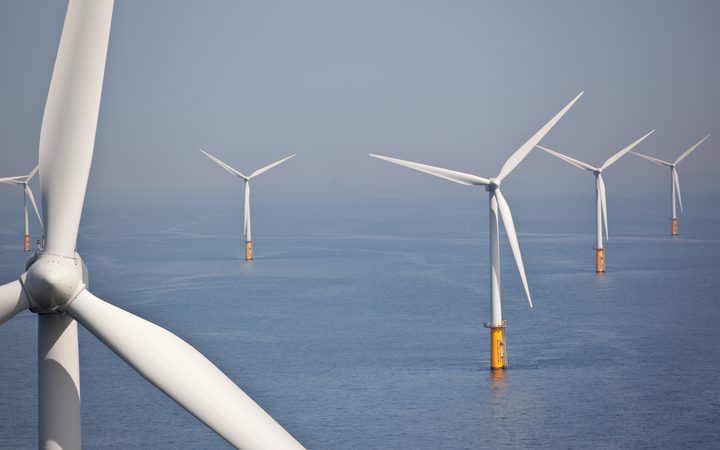As coal and gas rightly play a diminished role in the UK’s energy supply in favour of renewables and nuclear, large-scale energy storage is needed to meet fluctuations in demand. The solution could be lithium-ion, lithium iron phosphate or flow batteries — but which of these is best-suited to the job?
The problem with renewable energy
Demand for electricity varies hugely throughout each day. Unanticipated excess demand or a drop in supply may cause the grid frequency to fall off, leading to mass power outages. This happened back in August 2019 when two unexpected power losses at generation sites caused nearly one million UK residents to lose power.
Coal and gas power stations can be rapidly activated or deactivated to meet variations in demand. Wind, solar and nuclear power, while considerably cleaner, aren’t as versatile. Their output can’t easily be fine-tuned to meet demand.
Solar and wind are particularly unpredictable — in the past 24 hours (at time of writing), solar and wind have together met anywhere between 8% and 50% of the UK’s national energy demand. To avoid situations where ‘green’ energy is wasted due to low demand on sunny or windy days and reduce the need to make up supply shortfalls on calm, grey days with coal and gas ‘peaker plants’, large-scale energy storage is key.
Historically, there has been very little capacity for energy storage in the UK national electricity grid. The only significant large-scale storage relied on pumped storage, where surplus electricity pumps water up a mountain to be stored in a reservoir. At peak demand, the water is released, running through turbines to recover the electricity.
While pumped storage has its uses, there aren’t enough suitable sites to cater for the massive fluctuations in supply and demand associated with large scale solar and wind generation.
The industry leader — lithium-ion
Recent leaps forward in lithium-ion battery technology means that large-scale battery storage plants are now feasible. Several projects are already underway in the UK, including a 320 MW site on the Thames Estuary, with technology provided by Fluence.
Many projects use easily scalable modular systems with one or more securely sealed battery blocks. The modular configuration simplifies maintenance and repair — failed blocks can be replaced without taking the whole system offline. The lack of moving parts means that battery storage plants can have very rapid start-up times (tens of milliseconds), making them useful for smoothing fast voltage oscillations in the grid.
Lithium-ion batteries are taking the lion’s share of grid battery storage capacity, both installed and under construction, with older lead acid battery storage plants being replaced with lithium-ion or restricted to smaller installations. This is primarily driven by intense R&D in the automotive industry, making this technology the easiest and fastest to deploy.
Automotive manufacturers themselves are even diversifying into grid storage — Tesla is a major player and Daimler has a battery storage plant in Germany that uses old lithium-ion batteries from previous generation electric vehicles (EVs).
The contender — lithium iron phosphate
Lithium iron phosphate battery-based storage systems aren’t as widespread as their lithium-ion counterparts. Lower energy density makes them less favourable in the automotive industry, so the technology is less developed.
High energy density may be crucial for EVs but it’s less important in static power storage sites, where space and weight aren’t as restricted. In this case, other factors such as improved discharge rates, lifespan, temperature stability and safety may be more important than capacity. Lithium iron phosphate beats lithium-ion on each of these metrics, arguably making it more suited to large-scale grid storage. As the market for large-scale battery storage grows, it’s expected that lithium iron phosphate will start to be competitive or even favourable when compared to lithium-ion.
A key player and innovator in lithium iron phosphate technology is Chinese automotive manufacturer BYD. It operates an energy storage facility in Hong Kong that uses lithium iron phosphate cells and has plans for more large-scale installations.
The dark horse — flow
Flow batteries store charge in tanks of liquid electrolyte. This is pumped through electrodes to charge and the flow is reversed to discharge. Such systems have the advantage of being very easily scalable, simply by using bigger tanks of electrolytes.
Current flow batteries rely on vanadium. The largest existing installation is a 60MWh battery in Hokkaido, Japan. Canadian firm VRB Energy is currently developing a 100 MW/500MWh vanadium flow system in Xiangyang, China.
Vanadium is the preferred electrolyte because it offers excellent stability over thousands of cycles. However, increasing demand is driving prices up, which may reduce the economic viability of these installations. Organic electrolytes typically degrade much faster or operate under harsh acid/alkaline conditions, although functionalised quinone electrolytes are showing improved stability [1]. Iron-based ferrocyanide electrolytes are also promising — although they have lower energy density, the use of abundant iron and neutral pH makes these materials attractive vanadium replacements [2].
What does the future hold?
There are several promising technologies for large-scale energy storage. It seems likely that the market will diversify away from lithium-ion towards more suitable battery technologies, especially as R&D efforts accelerate to find a solution to the renewable energy fluctuation problem.
If you’re innovating with energy storage technologies, it’s important to have an IP strategy in place to avoid gifting your R&D to competitors.
Sources:
[1] M. J. Aziz et al, Joule, 2, 2018, 1894-1906
[2] Q Wang et al, Joule, 3, 2019, 2255-2267



















